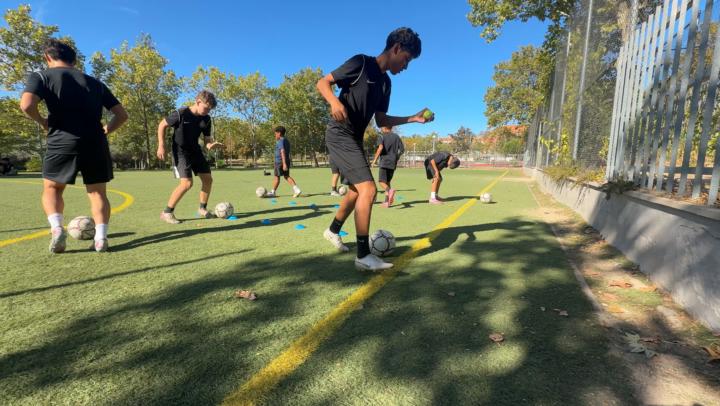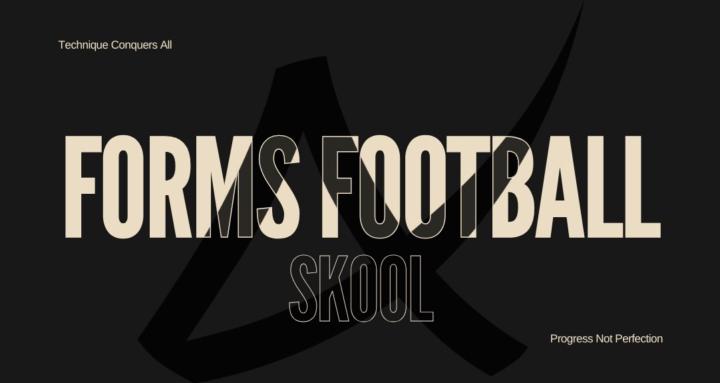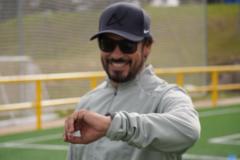
Write something
Why Training Groups at Forms Academy Sometimes Mix
At Forms Academy, we place children in training environments designed for growth. This sometimes means boys and girls train together, or younger players train with older ones. At other times, an older player may train with younger peers. These decisions are not about fairness in the short term but about what is best for each child’s long-term development. Boys and Girls in the Same Session Boys and girls build football skills through the same brain and body processes. Training together gives both groups valuable benefits. Girls often face faster speeds of play, which sharpens their decision-making. Boys encounter different movement and rhythm patterns, which force them to adapt. This variety helps all players become more complete and resilient. Younger Players Training with Older Younger players grow when they are pushed just beyond what feels comfortable. Training with older players increases the speed of decision-making and helps them adjust to higher physical and cognitive demands. It also allows older players to lead and refine their technique against younger, faster opponents. Older Players Training with Younger Sometimes, an older player needs to train with a younger group. This can happen when they need to rebuild confidence, recover from injury, or correct technical gaps that would otherwise be hidden in faster environments. Slowing the game down allows them to reset their foundation before moving forward again. It is not a punishment but a smart developmental step. Training Up is Not the Same as Playing Up Parents often ask why their child cannot simply play up in games if training up is helpful. The answer is that training is controlled and guided by coaches. We can raise or lower the level of challenge, stop, or adjust as needed. Games cannot be adjusted. If a player is not ready for the speed and physicality, they may get fewer touches, lose confidence, or develop poor habits. Training is where we create stretch. Games are where children consolidate what they have learned.
2
0
Dual-Task Overload and Neural Adaptation in Youth Football Development
This exercise looks simple at first glance: dribble through cones, toss or bounce a tennis ball, then play into a wall and explode out. But when you watch players attempt it, you’ll notice the complexity of the exercise challenging the players’ brain as they navigate the process. Some freeze mid-action. Some throw and kick at the same time. Others roll a soft pass that barely reaches the wall. These “short circuits” aren’t mistakes, rather, they are evidence of the brain under construction. The upcoming paper breaks down why this happens at a neurological level. We’ll explore the motor cortex, cerebellum, basal ganglia, and prefrontal systems, and explain why overloaded players hesitate or misfire. More importantly, we’ll look at how these errors are the raw material of development. The paper will show how repeated exposure to dual-task conflict builds neural efficiency, leading to long-term automaticity, weak-foot mastery, and match resilience.

Training for Transfer, Not Just Technique
Most soccer training "looks good" on the surface: clean drills, sharp touches, polished players. The problem is, none of that matters if the skill does not show up in the game. At Forms Academy, we do not train just for technique. We train for transfer. Transfer means the ability to take what you learn in practice and apply it when the game gets chaotic, when legs are tired, when defenders close space in half a second, when your next decision decides whether your team keeps the ball or loses it. Many players look great in drills but struggle when it matters most. Why? Because their brains only wired the skill for rehearsal, not for competition. The Neuroscience of Transfer The human brain does not store skills as "muscle memory." Muscles cannot remember anything. Skills are stored as neural circuits, networks of connections built through repetition, variation, and reinforcement. When a player practices a skill only in one setting, passing cleanly through cones in an empty field, for example, the brain encodes the movement as context-dependent. It works only in that exact situation. As soon as the environment changes, the neural pattern does not fire correctly. This is why a player can complete a hundred perfect passes in a drill but misplace one under pressure in a match. The brain did not build a flexible pattern. It built a fragile one. The solution is variability. Research in motor learning shows that when conditions shift (smaller space, more speed, added defenders), the brain is forced to generalize the skill. Instead of memorizing one narrow version, it creates a broader, more adaptable program. That program is what survives in real competition. Resistance Training for the Brain Parents sometimes see our training sessions and wonder why they do not look "clean." Passes go astray. Touches break down. Players look frustrated. That is not failure. That is the point. The nervous system works like the muscular system. Muscles only grow when stressed by resistance. Neural circuits only grow when stressed by variability and pressure. If training is always neat, the brain never struggles, and without struggle, there is no growth.

Training Under Fatigue: Where Real Skill Emerges
A Forms Academy position paper Fatigue as a Truth Serum When lungs burn and legs feel heavy, the brain stops micromanaging every touch. Any movement that is not deeply wired falls apart. By leaning into that moment rather than avoiding it, we show players exactly what is solid and what still needs work. The Core Neuroscience As energy runs low, control shifts from conscious circuits in the prefrontal cortex to automated circuits in the basal ganglia. Skills grooved through meaningful repetition survive the hand-off; skills that rely on conscious correction do not. Players feel the difference immediately. How We Layer Fatigue Into Technical Work - Sprint to rondoPlayers finish a short, all-out sprint and move straight into a one-touch rondo inside a five-yard box.Purpose: A tired first touch exposes whether surface angle and body position are automatic. - Ball-mastery circuits under loadThirty-second dribble combos (inside-outside, V-pulls, sole rolls), quick breath, repeat for five rounds.Purpose: High-rep touches with a spiking heart rate force clean contact without conscious adjustment. - Neural juggling matrix after agility-ladder burst. Players complete an intense ladder sequence (in-in-out, Ickey shuffle, single-leg hops), grab a ball, and execute a 100-touch juggling set (alternating feet, thigh, head).Purpose: Foot-eye precision must hold even while calves burn and breathing is ragged. - Rapid-fire transition games (1v1, 1v2, 3v2, reset, repeat).Purpose: With thinking time compressed, scanning and fast decisions must already live in the wiring. Outcomes for Our Players Technique remains tight from minute one to ninety. Decision-making stays calm when others are panicking. A competitive edge persists as opponents fade. Practical Focus We do not rely on heart-rate straps or sleep dashboards. Those tools can help and may be added later, but they are not prerequisites for training the brain to hold skill when the tank is empty. Instead, we build sessions that naturally expose weaknesses and hammer them until they become strengths.
3
0

The Problem with "Play Simple"
A Forms Academy Commentary on Development, Clarity, and the Science of Decision-Making in Football Across youth football, one of the most common instructions shouted from the sideline is: “Play simple.” At face value, this advice appears harmless and even logical. It suggests that young players should avoid overcomplicating the game, recycle possession quickly, and reduce mistakes. While this may create the appearance of efficiency in the short term, overusing the phrase “play simple” can constrain development and prevent players from reaching their full potential. At Forms Academy, we view the game differently. We do not train players to play simple. We train them to play with clarity. The Neuroscience of Skill and Decision-Making Neuroscience shows that every quality repetition of a skill strengthens neural pathways through the process of myelination. Myelin acts as insulation for neurons, enabling signals to travel more quickly and precisely. When children are conditioned only to “play simple,” they may avoid the repetitions that build more complex neural pathways. Instead of strengthening their brain’s ability to process multiple variables under pressure, they are conditioned to default to the most obvious, risk-free action. Cognitive science supports this. Cognitive load theory (Sweller, 1988) shows that beginners are easily overwhelmed by multiple demands. Limiting them to simple choices may seem helpful in the short term, but it does not expand their working memory or processing capacity. To become elite decision-makers, players must gradually be trained to handle increasing complexity. Sport psychology also confirms that elite performers do not merely react faster, they see more. Vision researchers such as Joan Vickers (2007) have shown that advanced players develop superior perceptual-cognitive skills. They recognize patterns earlier, anticipate options sooner, and act proactively rather than reactively. A “play simple” instruction that discourages exploration delays the development of this anticipatory vision.
3
0

1-5 of 5
powered by

skool.com/forms-football-skool-9380
The official community of Forms Academy. Where parents & coaches learn the science, systems, & philosophy that raise elite youth footballers (soccer).
Suggested communities
Powered by
